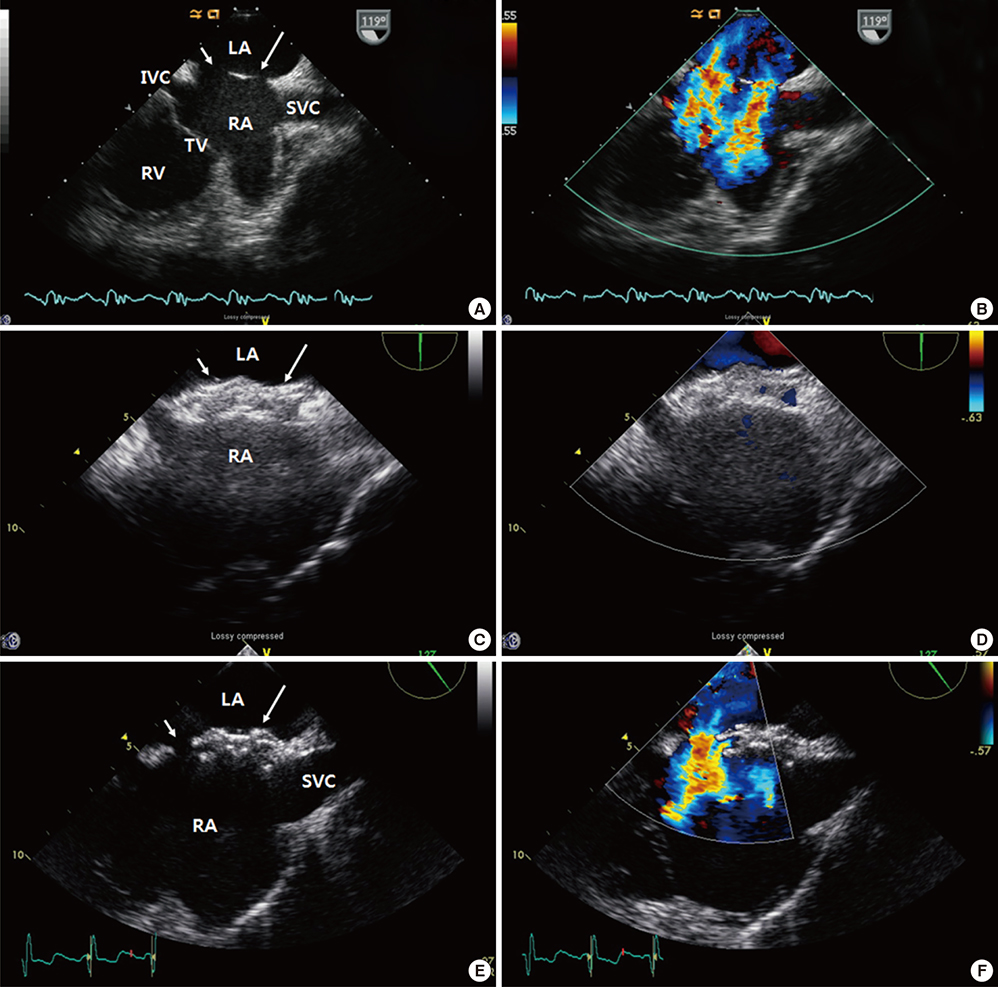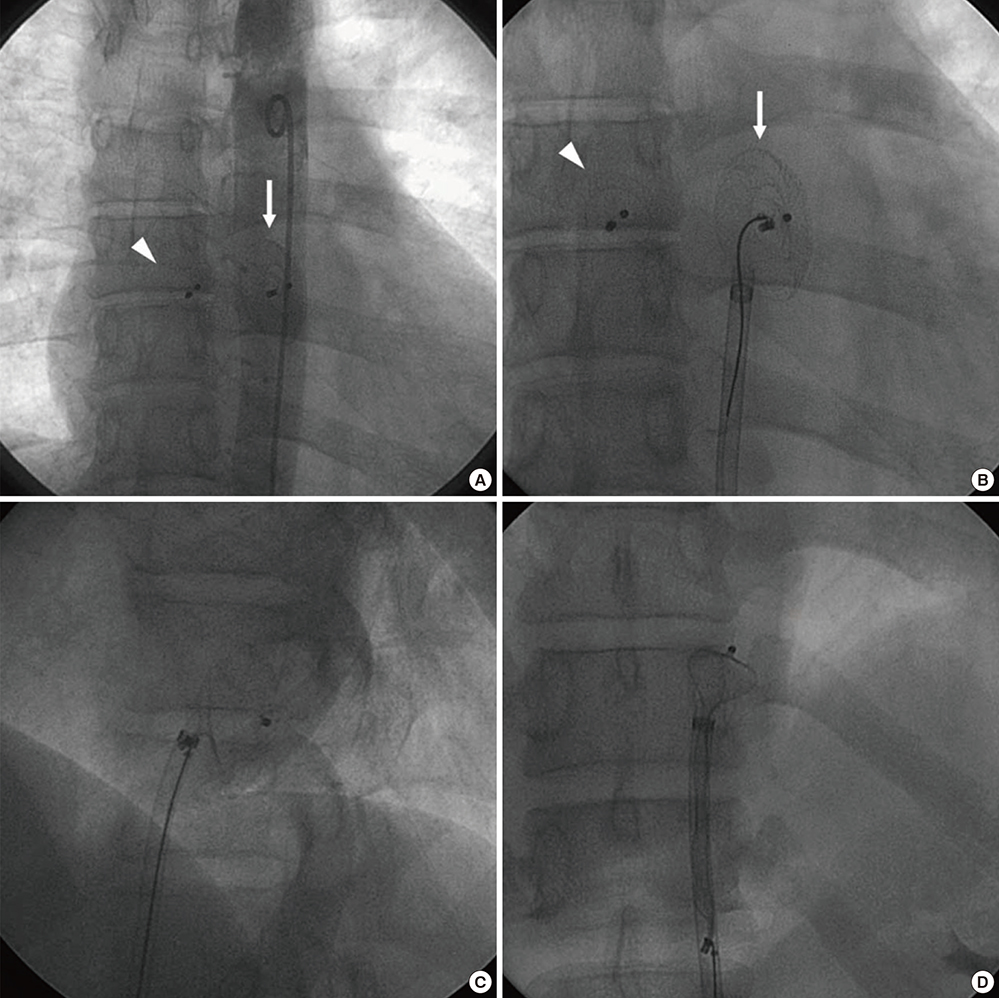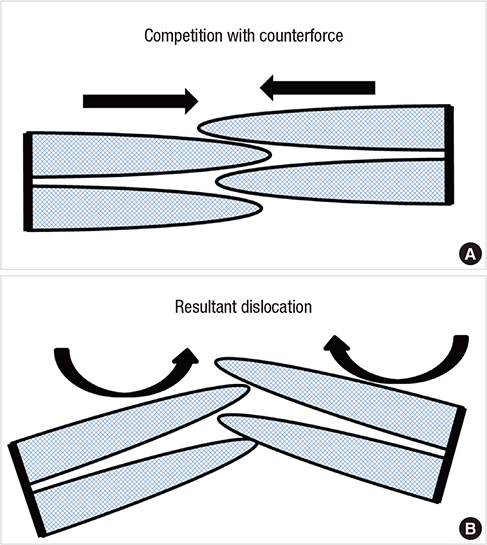J Korean Med Sci.
2015 Sep;30(9):1361-1366. 10.3346/jkms.2015.30.9.1361.
Percutaneous Retrieval of Embolized Amplatzer Septal Occluder after Treatment of Double Atrial Septal Defect: A Case Report
- Affiliations
-
- 1Department of Cardiovascular Medicine, Chonnam National University Hospital, Gwangju, Korea. christiankyehun@hanmail.net
- 2Department of Radiology, Chonnam National University Hospital, Gwangju, Korea.
- 3Translational Research Center on Aging, Chonnam National University Hospital, Gwangju, Korea.
- KMID: 2344165
- DOI: http://doi.org/10.3346/jkms.2015.30.9.1361
Abstract
- Embolization of the occlusion device after percutaneous closure of atrial septal defect (ASD) is a potential disastrous complication. The usual site of embolization is the right side of the heart including pulmonary artery, but the device embolization to the extracardiac aorta is extremely rare. Here, we report a successful percutaneous retrieval case of the embolized Amplatzer Septal Occluder (ASO) to the descending thoracic aorta after the successful deployment of two ASO devices in a patient with double ASD. Competition between the two devices to obtain a stable position may be an explanation for the migration of ASO.
MeSH Terms
Figure
Reference
-
1. Hopkins RA, Bert AA, Buchholz B, Guarino K, Meyers M. Surgical patch closure of atrial septal defects. Ann Thorac Surg. 2004; 77:2144–2149. author reply 9-502. King TD, Thompson SL, Steiner C, Mills NL. Secundum atrial septal defect. Nonoperative closure during cardiac catheterization. JAMA. 1976; 235:2506–2509.3. Du ZD, Hijazi ZM, Kleinman CS, Silverman NH, Larntz K. Amplatzer Investigators. Comparison between transcatheter and surgical closure of secundum atrial septal defect in children and adults: results of a multicenter nonrandomized trial. J Am Coll Cardiol. 2002; 39:1836–1844.4. Pedra CA, Fontes-Pedra SR, Esteves CA, Assef J, Fontes VF, Hijazi ZM. Multiple atrial septal defects and patent ductus arteriosus: successful outcome using two Amplatzer septal occluders and Gianturco coils. Cathet Cardiovasc Diagn. 1998; 45:257–259.5. Cao Q, Radtke W, Berger F, Zhu W, Hijazi ZM. Transcatheter closure of multiple atrial septal defects. Initial results and value of two- and three-dimensional transoesophageal echocardiography. Eur Heart J. 2000; 21:941–947.6. Berger F, Vogel M, Alexi-Meskishvili V, Lange PE. Comparison of results and complications of surgical and Amplatzer device closure of atrial septal defects. J Thorac Cardiovasc Surg. 1999; 118:674–678. discussion 8-807. Krumsdorf U, Ostermayer S, Billinger K, Trepels T, Zadan E, Horvath K, Sievert H. Incidence and clinical course of thrombus formation on atrial septal defect and patient foramen ovale closure devices in 1,000 consecutive patients. J Am Coll Cardiol. 2004; 43:302–309.8. Moore J, Hegde S, El-Said H, Beekman R 3rd, Benson L, Bergersen L, Holzer R, Jenkins K, Ringel R, Rome J, et al. Transcatheter device closure of atrial septal defects: a safety review. JACC Cardiovasc Interv. 2013; 6:433–442.9. Levi DS, Moore JW. Embolization and retrieval of the Amplatzer septal occluder. Catheter Cardiovasc Interv. 2004; 61:543–547.10. Amanullah MM, Siddiqui MT, Khan MZ, Atiq MA. Surgical rescue of embolized amplatzer devices. J Card Surg. 2011; 26:254–258.11. Son JW, Park JS. Subacute, silent embolization of amplatzer atrial septal defect closure device to the pulmonary artery. J Cardiovasc Ultrasound. 2012; 20:201–204.12. Mashman WE, King SB, Jacobs WC, Ballard WL. Two cases of late embolization of Amplatzer septal occluder devices to the pulmonary artery following closure of secundum atrial septal defects. Catheter Cardiovasc Interv. 2005; 65:588–592.13. Chan KT, Cheng BC. Retrieval of an embolized amplatzer septal occluder. Catheter Cardiovasc Interv. 2010; 75:465–468.14. Pala S, Açar G, Tigen K, Kirma C. Percutaneous retrieval of an interatrial septal occluder device embolized into the aortic arch. Turk Kardiyol Dern Ars. 2010; 38:502–504.15. Guimaraes M, Denton CE, Uflacker R, Schonholz C, Selby B Jr, Hannegan C. Percutaneous retrieval of an Amplatzer septal occluder device that had migrated to the aortic arch. Cardiovasc Intervent Radiol. 2012; 35:430–433.16. Misra M, Sadiq A, Namboodiri N, Karunakaran J. The 'aortic rim' recount: embolization of interatrial septal occluder into the main pulmonary artery bifurcation after atrial septal defect closure. Interact Cardiovasc Thorac Surg. 2007; 6:384–386.17. Mehta S, Hill JA, Qureshi AM, Latson LA, Prieto LR. Helex device closure of multiple atrial septal defects. Catheter Cardiovasc Interv. 2014; 84:204–210.18. Song ZY, He GX, Shu MQ, Hu HY, Tong SF, Ran BL, Liu JP, Li YH, Jing T. Clinical efficiency and safety analysis of transcatheter closure of multiple atrial septal defects in adults. Clin Cardiol. 2009; 32:130–134.
- Full Text Links
- Actions
-
Cited
- CITED
-
- Close
- Share
- Similar articles
-
- Subacute, Silent Embolization of Amplatzer Atrial Septal Defect Closure Device to the Pulmonary Artery
- Percutaneous Forceps Retrieval of an Embolized Amplatzer Duct Occluder
- Transcatheter Closure of Secundum Atrial Septal Defect with the Amplatzer Septal Occluder
- Amplatzer septal occluder found in the thoracic descending aorta by transesophageal echocardiography: A case report
- The Operative Management of Embolized Septal Occluder at Ascending Aorta





